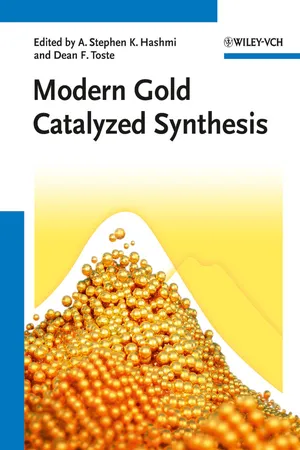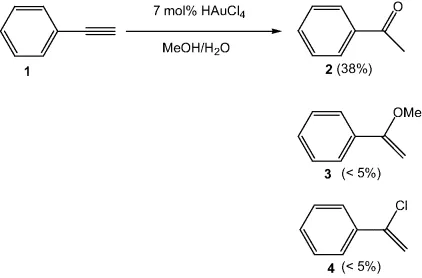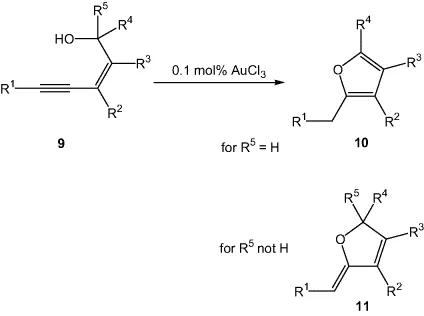
- English
- ePUB (mobile friendly)
- Available on iOS & Android
Modern Gold Catalyzed Synthesis
About This Book
With its impressive features, gold has led to completely new reaction types in recent years, which in turn have strongly influenced both
organic catalysis and material science. Other fields where a significant amount of new results has been obtained include nanotechnology,
self assembly/supramolecular systems and biochemical/medicinal chemistry. As a result, gold is one of the hottest topics in catalysis at
the moment, with an increasing amount of research being carried out in this field.
While focusing on homogeneous catalysis, this monograph also covers the main applications in heterogeneous catalysis. Following
a look at the gold-catalyzed addition of heteroatom nucleophiles to alkynes, it goes on to discuss gold-catalyzed additions to allenes and
alkenes, gold-catalyzed benzannulations, cycloisomerization and rearrangement reactions, as well as oxidation and reduction reactions.
The whole is finished off with a section on gold-catalyzed aldol and related reactions and the application of gold-catalyzed reactions to natural
product synthesis.
Of interest to synthetic chemists and inorganic chemists, as well as organic chemists working in homogeneous catalysis, physical and
technical chemists.
Frequently asked questions
Information
1.1 Introduction

1.2 Reactions of Alkynes Using Gold Chloride as Catalyst






1.3 The Correlation of E° with the Activity of Gold for the Hydrochlorination of Acetylene
1.3.1 The Initial Correlation
Table of contents
- Cover
- Further Reading
- Title Page
- Copyright
- List of Contributers
- Chapter 1: Hydrochlorination of Acetylene Catalyzed by Gold
- Chapter 2: Gold-Catalyzed Reduction Reactions
- Chapter 3: Gold-Catalyzed Benzannulations: Asao–Yamamoto Benzopyrylium Pathway
- Chapter 4: Gold-Catalyzed Reactions of Propargyl Esters, Propargyl Alcohols, and Related Compounds
- Chapter 5: Intramolecular Hydroarylation of Alkynes
- Chapter 6: Gold–Alkyne Complexes
- Chapter 7: Gold–Alkene Complexes
- Chapter 8: Hydration and Hydroalkoxylation of CC Multiple Bonds
- Chapter 9: Gold-Catalyzed Aldol and Related Reactions
- Chapter 10: Gold-Catalyzed Oxidation Reactions: Oxidation of Alkenes
- Chapter 11: Gold-Catalyzed Oxygen-Atom Transfer to Alkynes
- Chapter 12: Gold-Catalyzed Additions to Alkenes: N-Nucleophiles
- Chapter 13: Gold-Catalyzed Additions to Alkenes: O-Nucleophiles
- Chapter 14: Oxidation of Alcohols and Carbohydrates
- Chapter 15: Applications of Gold-Catalyzed Reactions to Natural Product Synthesis
- Chapter 16: Gold-Catalyzed Addition Reactions to Allenes
- Index